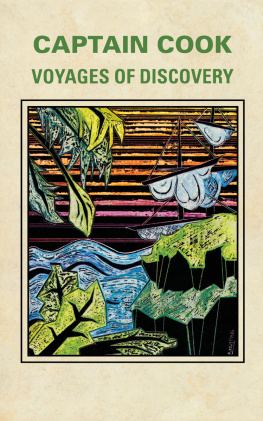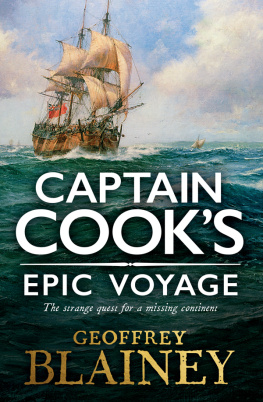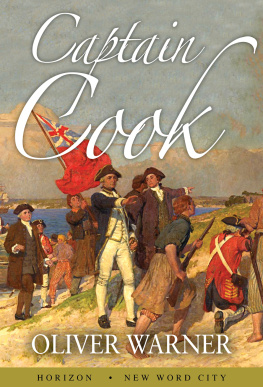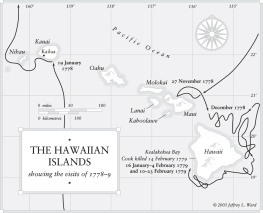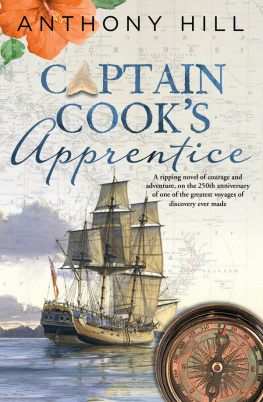The schooner lurched drunkenly to port as yet another gigantic wave roared past and contemptuously brushed the thirty ton ship aside like a decaying autumn leaf. When the schooner reached the top of the wave, I was hit by the full force of the wind and the indescribable noise. Now I could see the wind ripping huge jagged bites out of the exposed wave crest and then regurgitating the seawater in a frenzy of shredded white foam that sliced through the air, at times reducing visibility to near zero.
I was numbed beyond thought, conscious only of fear, weariness, and the all pervading cold. I was motivated now only by some obscure but unquenchable determination within me to never, ever give in.
I jerked the wheel frantically to stay on a course of about seventy-five degrees to the face of the wave. Then, as the half-chewed crest of the wave passed, came yet one more heart-stopping moment as the schooner was suspended on the very peak of the wave with the rudder completely out of the water, the wheel a useless irrelevance in my frozen hands. When the crest of the wave reached the bow, the schooner dropped backwards with the bowsprit completely enveloped in foaming white water. The retreating wave crest then raced ahead, leaving us battered and spent in its wake.
Now that the wave had passed, the ship was again exposed to the full force of the wind and Wavewalker raced downwind at breakneck speed despite the fact that we had not a stitch of sail set. Within seconds, even though we were trailing hundreds of yards of thick mooring rope from the stern in an effort to keep our speed down, the log was again registering a full fifteen knots. The tattered remnants of the canvas cockpit dodgers, which had flown in strips from the brass grommets since the wind exploded them many hours before, continued to flap their maniacally demented chorus on either side of me.
The wind was so strong that I was constantly forced against the wheel, and the only way I could steer the ship was by bracing both knees against the mahogany binnacle supporting the compass. I did this for a few seconds at a time while I moved the wheel feverishly to line up the stern to meet the next huge wave that I heard approaching from astern like a berserk steaming express train.
I snatched a terrified glance behind me at that inhuman roar of sound once more, and then it was there, just visible through the curtain of whiteness a huge green hand in front of the wave reaching out from that shiny black heart, stretching and grasping for the ship with icy, foam-flecked fingers. I braced my knees to pull my body away from the wheel once more so that I could make a last second instinctive adjustment to the course.
The ship lurched forward sickeningly as the wave caught the stern, and the bowsprit went down and down, and then yet further down, at an impossible angle. Then the wave exploded around the ship and I could suddenly see green water and white spray bouncing halfway up the sixty foot mainmast just in front of the cockpit. I could see right along the decks to the bowsprit because the cockpit cover, which normally gave some protection to the helmsman, had been blown apart when the needle on the windshield instrument stuck at its end stop sixty knots. The heavy waterproof canvas tore down one side in almost slow motion, and then the whole cover simply vanished, leaving a few blue streamers whipping and snapping horizontally. Soon the needle on the wind-speed instrument was bashing against its end stop in a frenzy as the wind grew stronger and stronger. The needle finally collapsed backwards, infinitely slowly, to register zero, presumably when the sender unit at the top of the mast simply disintegrated.
The crest of yet another huge wave swept under us, and again came the moments of panic as the wheel turned to jelly in my hands. The wind forced me against the wheel, and I peeled back the many layers of waterproofs and sweaters covering my wrist to check my watch. It was almost six oclock local time and already starting to get dark. I dreaded facing another freezing never-ending night with nobody to relieve me on the wheel, the moments of near despair punctuated regularly with moments of fear. At least I didnt have to worry about meeting any other ships during the night. Here, in the wastes of the Great Southern Ocean, we were just about as far away from any other human life as is possible on planet Earth. We were now right in the middle of the Roaring Forties, halfway between the southern tips of Africa and Australia and more than two thousand miles from either.
As I looked at my watch I felt my hand and arm growing numb with cold, and I hastily recovered my wrist. It was well below freezing, bitterly cold even without the benefit of the wind-chill factor. The storm was enlivened from time to time with snow hurtling horizontally at me from astern, a complete blizzard that brought visibility to nothing.
I realised that, despite three pairs of thermal socks inside my sea boots, I could hardly feel any life in my feet for the cold. I stamped my feet feverishly because I knew that, with the approaching darkness, the temperature would drop even lower, and I could not risk starting the night with partly frozen feet.
Once again I cursed the vile luck that had given us weeks of westerly gales since leaving Cape Town, forcing us to sail for hundreds of miles with just a tiny storm jib and finally with just bare masts. The constant westerly gales had produced regular waves higher than our sixty foot mainmast and with crests more than a quarter of a mile apart. A few days before, gale force winds from the south had assailed us right off the Antarctic ice cap. These winds increased gradually to a full storm, creating a completely separate pattern of waves. It was the interaction of these two gigantic wave systems that was now producing our present nightmare seas, which were punctuated with completely unpredictable freak waves that were not only huge but moved almost at right angles to each other.
As the schooner lurched to the top of yet another incredibly huge wave, the screaming of the wind reached a crescendo that was painful to my ears even though they were covered with oilskins, scarves, and balaclavas. I was now deadly tired but, paradoxically, I was aware of every facet of wind and wave, my consciousness expanded by fear and concentration to a level almost superhuman.
How many more waves before Mary passed up a hot drink? How high were the waves now? If only the weather conditions would ease down just enough so that perhaps Larry or Herbie could take over the wheel for a few hours. It was now nearly fifteen hours since Larry had freely admitted that he could no longer cope with steering the schooner in these conditions. If Larry couldnt cope, then Herbie certainly couldnt, and the job had long since passed beyond Marys strength. I was the captain and the most experienced sailor on board, so it fell to me to steer the ship until the danger passed. We could not take the risk of stopping and heaving to in these conditions. But surely, I reasoned, after three days and nights even a storm in the Great Southern Ocean would blow itself out. Surely the wind speed had to drop soon.
Perhaps it was some type of premonition, but right at that moment my mind registered a sudden drop in the strength of the wind. I suddenly realised that the wind was no longer threatening to push me through the spokes of the wheel, and then I noticed that the tormented screaming of the wind was beginning to ease. Could this be the end of the storm, I wondered? It was getting dark very, very fast, and I snatched a glance behind and saw an enormous dark cloud towering over the ship. No wonder it was getting darker, but what had stopped the wind and the noise? I turned and looked again over the stern. Then with slowly dawning horror, I realised that the gigantic black cloud was in reality a wave, an impossibly high vertical wall of evil black water. Not one speck of driven spray marred that dark, malevolent surface that was a window straight to the heart of hell. This deviant wave was so high that it had completely shut off the wind and produced a cathedral silence. I had never seen such a wave before and have not seen one since. We had survived thousands of giant waves so far, but this wave was completely vertical and almost twice the height of any previous wave. It was obscene, a monstrous, wicked mutation that could cut off the sound and fury of a full storm. And then, far above me, I could see the contorted writhing crest, and I could hear the increasing crescendo of sound as this depraved green watery beast moved in to engulf and destroy my ship and my family. I had never felt so completely helpless in my life for I knew instinctively and with absolute certainty that no yacht could hope to rise up that sheer ebony precipice of water. I was absolutely powerless to take any avoiding action to save my family and my ship.



